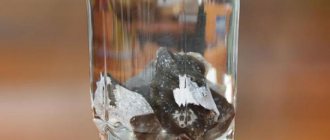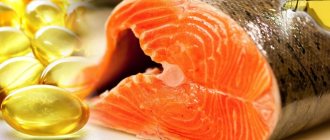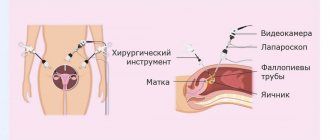Sex hormones control our entire lives, so hormonal balance is extremely important for the normal functioning of the body and overall well-being.
Without estrogens, a woman would not have a chance at motherhood, attractive appearance and sexual attractiveness. A normal amount of these hormones allows you to have strong bones, the necessary level of good cholesterol and an effectively functioning metabolism, preventing many dangerous diseases.
But in excess amounts, estrogens increase the risk of some dangerous diseases, including breast and ovarian cancer. Therefore, it is so important to study the level of sex hormones at different stages of life.
The role of estrogens
The content of the article
One of the most important sex hormones for women is estrogens, which are produced mainly in the ovaries, as well as in the placenta and adipose tissue. This is a group of hormones that include:
- estradiol;
- estrone;
- estriol.
The influence of estrogen on our body is very wide:
- affect the reproductive system;
- responsible for the development of mammary glands;
- regulate the menstrual cycle;
- promote the development of uterine muscles;
- increase vaginal hydration.
Estrogens also affect the urinary system, speed up metabolism, protect blood vessels, increase the concentration of “good” cholesterol, and stimulate bone mineralization.
However, estrogens can also influence the development of many serious diseases, including many types of cancer, including:
- breast cancer;
- endometrial cancer;
- ovarian cancer;
- lung cancer.
This is why it is so important to control the levels of these hormones. Excess estrogen, as well as deficiency, can have very serious health consequences.
How to Maintain Normal Estrogen Levels
With estrogen dominance, problems such as insomnia, weight gain/fluctuation, slow metabolism, polycystic ovary syndrome (PCOS) and other problems with the reproductive tract, hair and skin are quite common.
If your body doesn't produce enough estrogen, you may experience symptoms such as decreased sex drive, unstable emotions, weight gain, depression and anxiety, and thinning hair.
There are at least 5 ways to maintain normal estrogen levels:
- Check your intestines. Research shows that its health plays an important role in estrogen balance. Problems such as leaky gut syndrome and other digestive difficulties may indicate that your gut lining doesn't have enough beneficial bacteria, and you may need to increase your intake of probiotics. Talk to your doctor about choosing a quality probiotic. Also, eat fermented foods like kombucha, kefir, or sauerkraut.
- Adjust your diet. To maintain proper hormonal function, increase your intake of fruits and vegetables and eliminate foods cooked in oil. Instead, use oils rich in fatty acids and omega-3s, such as olive oil. Also avoid highly processed foods and sweets.
- Choose household chemicals and household items more carefully. Household chemicals that we come across every day can affect the functioning of the endocrine system and, consequently, the level of estrogen. For example, plastic food containers often contain endocrine-disrupting chemicals such as bisphenol, and many cleaning products and cosmetics contain synthetic substances that act like, but are not, natural hormones in the body. Thus, it is advisable to choose more environmentally friendly brands of cosmetics and skin care products, and avoid some household items altogether.
- Relax. High levels of stress are associated with an imbalance of hormones, including estrogen. Cortisol, which our body produces to combat stress, requires progesterone (another female hormone) to be produced. So, more stress means less progesterone in our body, which means estrogen is no longer controlled and can spike. Keep your stress levels under control, take time for yourself - take a bath, read a good book.
- Get enough sleep. The body repairs itself while we sleep, and regulating hormones is part of the body's repair cycle. If you don't get enough sleep, one of the consequences could be hormonal imbalance. Try improving your sleeping conditions: buy a new pillow or blackout curtains. Try eating a high-protein meal a couple of hours before you go to bed, or take an Epsom salt bath before bed.
Symptoms of excess estrogen
Excess estrogen manifests itself in women as menstrual irregularities. It may appear as a result of diseases (for example, ovarian cancer) or poor nutrition, stress, heavy physical activity, as a hereditary factor. Excess estrogen leads to embolism and thrombosis, edema and the appearance of stones in the bile ducts. Thus, the symptoms that accompany increased levels of these hormones cannot be ignored.
You should definitely check your estrogen levels if you notice most of the following symptoms:
- swollen and tender breasts;
- bloating;
- weakened libido;
- irregular menstruation;
- headaches and migraines;
- mood swings;
- weight gain;
- hair loss;
- hands and feet are cold;
- chronic fatigue;
- problems with concentration and memory;
- sleep problems;
- frequent cramps, especially in the lower extremities;
- nausea and vomiting.
Estrogen levels can be reduced with medications and changes in your daily diet. It should exclude foods rich in natural estrogens, called phytoestrogens, that is, first of all, soy products, as well as meat from animals raised using synthetic hormones. Food packaging (plastic containers), as well as antibacterial soaps and dishwashing liquids, may contain triclosan, a substance similar in chemical formula to estrogen, which can disrupt the body's hormonal balance.
Hypoestrogenic conditions in women of reproductive, pre- and menopausal ages
Hypoestrogenic conditions include changes in the body of women against the background of a decrease or cessation of estrogen production by the ovaries.
First of all, a complex of vegetative-vascular, neuroendocrine and neuropsychic symptoms arises (early temporary disorders). Then urogenital and sexual disorders and changes in appearance appear (medium-term disorders). Late metabolic disorders occur last: osteoporosis, coronary heart disease, Alzheimer's disease [1].
These numerous symptoms of hypoestrogenism are associated with the presence of a huge number of estrogen receptors in various organs and systems of a woman: genitals, hypothalamus and pituitary gland, cardiovascular system, urethra and bladder, skin and hair, large intestine, liver [2].
The above changes can occur not only naturally during menopause, but also when a woman’s body is exposed to other factors: after surgical operations (removal or resection of the ovaries due to cysts and apoplexy, amputation of the uterus); with depletion of the follicular apparatus (ovarian depletion syndrome) [3, 4]; with a perverted reaction of estrogen receptors (resistant ovarian syndrome); against the background of the use of certain medications, in particular hormone-releasing hormone agonists (AH-RG); in the treatment of estrogen-dependent diseases of the female reproductive system, as well as in long protocols for stimulating superovulation in the in vitro fertilization (IVF) program for the treatment of infertility (requires add-back therapy to relieve neurovegetative symptoms) [5, 6].
Hypoestrogenic conditions associated with a slight decrease in estrogen production (with sparing resection of the ovaries, cauterization of not polycystic, but multifollicular ovaries, etc.) have their own special clinical manifestations, most often leading to impaired reproductive function (anovulation, luteal phase deficiency; reduced ovarian reserve , leading to a poor ovarian response in IVF programs) [7]. According to our data, such patients occur in IVF programs in 22.3% of cases.
Hypoestrogenism in the menopausal period can serve as a model for studying the classical clinical manifestations of this condition, since menopause is a natural rather long biological process of transition from the reproductive period to old age, which is based on the gradual decline of ovarian function and a decrease in estrogen production. Early-time disorders manifest themselves most clearly [1]. The complex of symptoms of early-term disorders with a certain degree of severity is usually called climacteric syndrome (CS). According to our data obtained together with I.V. Besman [8], CS in perimenopause occurs in 57.6% of cases, while in 65% it occurs in a complicated form (i.e., against the background of extragenital pathology). The complicated form of CS causes the maximum severity of CS symptoms. Currently, early symptoms of hypoestrogenism are associated with disorganization of the function of the limbicoreticular complex. Impaired hypothalamic function is associated with manifestations of early-onset disorders such as hot flashes, hyperhidrosis, palpitations, and hypertension. Depression, sleep disturbances, headaches, and memory loss are associated with dysfunction of the limbic system. All early-term disorders reduce a woman’s quality of life, but this is especially true for hot flashes and sleep disorders. Hot flashes can bother a woman 5–10–20 or more times a day. Sleep disorders: prolongation of the period of falling asleep, frequent awakenings at night, shallow sleep - do not give the feeling of proper rest. Undoubtedly, all these disorders require a differentiated approach to treatment depending on the cause of hypoestrogenism and the age at which they occur.
Today, hormone replacement therapy (HRT) is considered a non-alternative pathogenetic therapy for early symptoms of hypoestrogenism [1, 6]. In women of reproductive age after surgical removal or resection of the ovaries, with resistant and exhausted ovarian syndromes, treatment can begin with combined estrogen-progestogen drugs [1]. These can be modern three-phase drugs, for example Qlaira. In women after hysterectomy, therapy is carried out using natural estrogens followed by the addition of gestagens [6]. If oral drugs are poorly tolerated, they can be recommended in the form of a gel or patch for percutaneous administration (Estrogel, Divigel, Klimara) with periodic administration of gestagens vaginally (for example, Utrozhestan). The duration of HRT is determined by the condition and well-being of the patient.
During menopause, when treating early-onset disorders, it is important to adhere to the position of the International Menopause Society (2007):
- HRT is prescribed for clear indications, primarily for the relief of menopausal symptoms;
- the need for continued treatment and the presence of indications for HRT should be reviewed regularly, especially with long-term use.
In addition, modern principles for prescribing HRT should be taken into account:
- only natural estrogens are used (17β-estadiol, estradiol valerate);
- minimally effective doses of hormones are used;
- the drug is selected individually;
- before therapy, a special examination is carried out, during therapy - daily monitoring;
- the start of HRT should not be later than 5 years from the onset of menopause;
- HRT should not be prescribed if there are contraindications.
Contraindications to HRT:
- skin lesions;
- estrogen-dependent tumors of the genital organs;
- suspected presence or presence of breast cancer;
- venous thromboembolism;
- severe liver and kidney diseases;
- bleeding from the genital tract of unknown origin.
HRT modes:
- In perimenopause - cyclic drugs that imitate the normal menstrual cycle (Klimonorm, Cyclo-Proginova, Estrogel, Divigel + Utrozhestan, Duphaston, Klimen, Femoston 1/10, 2/10, etc.).
- In postmenopause - continuous therapy that does not cause bleeding: Angelique (1 mg 17β-estadiol + 2 mg drosperinone), Mirena + Klimara, Klimadien (estradiol valerate + dienogest), Estrogel + Utrozhestan, Livial (tibolone), Femoston 1/5.
- In the absence of a uterus, monotherapy with estrogens (Klimara, Proginova, Estrogel, Divigel).
- For obesity, metabolic syndrome, increased risk of vascular episodes, phase therapy with transdermal and vaginal forms (Estrogel, Divigel, Utrozhestan).
- If the patient refuses HRT or there are contraindications, decide on the use of herbal medicine in the form of homeopathic medicines and dietary supplements, which include estrogen-like substances. These drugs have virtually no contraindications and contain cohosh extract, soy, vitamins, minerals, etc. Among them are Remens, Klimaxan, Klimaktoplan, Klimadinon, QI-CLIM, Menopace Plus, Estrovel, Menoril, Soifem, etc.
The drug Menopace Plus is interesting in its composition, which includes capsules with vitamins and minerals (21 components), as well as herbal tablets containing soy isoflavones, flax seed lignans, sage and green tea. The components of the herbal tablet are converted into phytoestrogens in the intestines, have a beneficial effect on the nervous system, reduce hot flashes, and are sources of antioxidants. The cycle of taking this drug, one capsule and one herbal tablet per day, is 28 days.
We, together with I.V. Besman [9], have experience in the use of alternative herbal remedies to HRT in the treatment of a complicated form of CS in cases where HRT was contraindicated. Our studies have shown that the quality of life of these patients, determined by a special scale, is somewhat worse than that of those who took HRT; but significantly better than those who did not take any drugs at all. In addition, these drugs give a good effect in relieving vasomotor symptoms in long protocols with AG-RG IVF programs.
All of the above once again confirms the opinion of experts that a differentiated approach to the treatment of early-term disorders in hypoestrogenic conditions using HRT of various regimens or alternative herbal remedies gives a good effect and significantly improves the quality of life of women.
Literature
- Medicine of menopause / Ed. V. P. Smetnik. Yaroslavl: Litera Publishing House LLC, 2006. 848 p.
- Kulakov V.I., Prilepskaya V.N. Practical gynecology. Clinical lectures. 3rd ed., add. M.: MEDPress-inform, 2006. 720 p.
- Dobrokhotova Yu. E. Hysterectomy in reproductive age (systemic changes in a woman’s body and methods of their correction). Author's abstract. dis. Dr. med. Sci. M., 2000. 36 p.
- Zaidieva Ya. Z. Hormone replacement therapy. Pharmacology and clinical application. M.: 2001. 50 p.
- Infertile marriage. Modern approaches to diagnosis and treatment: a guide / Ed. G. T. Sukhikh, T. A. Nazarenko. 2nd ed., rev. and additional M.: GEOTAR-Media, 2010. 784.: ill.
- Guide to outpatient care in obstetrics and gynecology / Ed. V. I. Kulakov, V. N. Prilepskoy, V. E. Radzinsky. M.: GEOTAR-Media, 2006. 1056 p.
- Nazarenko T. A. Stimulation of ovarian function. 3rd ed., add. M.: MEDPress-inform, 2011. 272 p.: ill.
- Besman I.V., Rudakova E.B. Medical tactics for complicated forms of menopausal syndrome in perimenopausal women // Omsk Scientific Bulletin. 2010. No. 1 (94). pp. 10–13.
- Rudakova E. B., Besman I. V. Quality of life as a criterion for the effectiveness of treatment of menopausal syndrome // Omsk Scientific Bulletin. 2008. No. 1 (65). pp. 81–84.
E. B. Rudakova1, Doctor of Medical Sciences, Professor T. V. Strizhova, Candidate of Medical Sciences L. Yu. Zamakhovskaya
GBUZ MO MOPC, Balashikha
1 Contact information
Abstract. Pathogenetic therapy treatment of early symptoms of hypoestrogenism consists of hormone replacement therapy (HRT). In the case of contraindications to the HRT medication or refusal of a woman, alternative herbal medication is effective less than HRT, but however improves the quality of life.
Symptoms of estrogen deficiency
Many factors contribute to low estrogen levels. Estrogen deficiency at a young age can cause underdevelopment of the ovaries, Swyer syndrome, Turner syndrome, and in older women it can be the result of premature ovarian failure or the onset of menopause. Estrogen deficiency can occur from anorexia, extreme physical activity, insufficient pituitary gland function, and alcohol abuse. Estrogen deficiency is manifested by symptoms of a mental and physical nature:
- irritability and decreased mood;
- problems with concentration;
- sleep disturbance;
- constant fatigue;
- rapid heartbeat;
- "tides";
- sweating;
- increase in body weight;
- dry eyes, skin, vagina;
- headaches;
- decreased libido.
How to prepare for testing?
How do you know if estrogen is high or low? A qualified doctor, after a thorough examination, questioning, and study of the medical history, will make an accurate diagnosis of “lack of estrogen in women” and prescribe treatment depending on the degree of imbalance.
Tests will help determine the deficiency of the hormone estrogen in women. Blood for estrogen is donated from a vein. The day before, you should not drink alcohol or take medications. If taking medications cannot be stopped, you must tell your doctor about this in advance. Before taking tests for low estrogen levels, it is recommended to abstain from sexual intercourse, intense physical activity, and avoid stress. A few hours before testing for low estrogen, women should not smoke. You need to donate blood in the morning on an empty stomach.
You can make an appointment with a specialist who can quickly and effectively diagnose low estrogen levels and prescribe treatment online by following the link - https://45plus.rf/registration/.
Estrogen studies
The appearance of symptoms characteristic of a lack or excess of estrogen should be a signal that it is necessary to examine the level of these hormones in the blood. This study is carried out on an empty stomach, that is, approximately 8 hours after the last meal.
The norm of estrogen for women
| Hormone | Phase | Normal indicator |
| Estrone | during the childbearing period | 17-200 ng/l |
| during the postmenopausal period | 7-40 ng/l | |
| Estradiol | in the follicle maturation phase | 30-120 ng/l (110-440 pmol/l) |
| during ovulation | 130-370 ng/l (477-1358 pmol/l) | |
| during the luteal phase | 70-250 ng/l (257-917 pmol/l) | |
| during the postmenopausal period | <10 ng/l | |
| Estriol | below 80 ng/l |
Normal estrogen levels for men
| Hormone | Normal indicator |
| Estrone | 10-60 ng/l |
| Estradiol | 10-40 ng/l |
| Estriol | <160 ng/l |
Why is it dangerous?
Pathological risks arising from a deficiency of female sex hormones are typical for patients of any gender and age, regardless of the cause of the hormonal imbalance.
Complications of estrogen deficiency include:
- osteoporosis and high risk of injury;
- Chronic pathological processes in the genitourinary system;
- Diseases of the circulatory system.
Osteoporosis is a decrease in density and pathological restructuring of bone tissue. It is quite difficult to diagnose pathology at an early stage, so most often doctors are faced with its consequences.
According to statistics, in women with a lack of estrogen, the risk of developing a hip fracture increases by 30%.
Every fifth of patients with such an injury dies within three months due to complications of prolonged immobilization.
Hypoestrogenism also causes atrophy of the epithelium of the urinary tract. Atrophic urethritis and cystitis are manifested by painful and frequent urination, urgency, urinary incontinence, and recurrent infections. Symptomatic treatment of such pathologies is ineffective; correction of hormonal levels is necessary.
Also, a lack of estrogen is one of the risk factors for the development of cardiovascular diseases.
Patients with a deficiency of female sex hormones are three times more likely to die from acute cardiovascular complications - heart attack and stroke.
Estrogens in food
If we have estrogen deficiency, then it is worth changing our daily diet. Where is the most estrogen? Particularly rich in phytohormones:
- vegetables (broccoli, Brussels sprouts, cabbage, cauliflower, legumes, onions, garlic);
- fruits and berries (citrus fruits, grapes, apples, pears, black currants);
- seeds;
- nuts;
- grains such as barley, rye and wheat;
- in many herbs, for example, clover, alfalfa, motherwort, valerian, sage.
If you find an error, please select a piece of text and press Ctrl+Enter
Treatment
To compensate for the lack of estrogen, the endocrinologist must find out the causes of the pathological condition. In addition, when drawing up an individual treatment plan, the patient’s age, individual characteristics, obstetric history and concomitant diseases are taken into account.
Nutrition and lifestyle correction
It is curious that therapy for hypoestrogenism often begins with recommendations on nutrition and lifestyle. It has been proven that regular consumption of products such as:
- beans, peas, chickpeas, lentils and other legumes;
- olives and olives;
- vegetables - eggplant, pumpkin, carrots, cabbage, broccoli;
- pomegranate, apricots, mango, papaya;
- soy products;
- pumpkin seeds, sunflower seeds, sesame seeds;
- sprouted wheat;
- olive and linseed oil.
Additionally, to prevent osteoporosis, endocrinologists recommend taking foods rich in vitamin D (fatty sea fish, egg yolk, liver, milk) or special therapeutic and preventive complexes (for example, Calcium D3 Nycomed, D-calcin).
In addition to diet, regular physical activity, quitting smoking, and limiting the consumption of coffee, salt and sugar will help normalize hormonal levels. Following the principles of a healthy lifestyle significantly reduces the risk of developing metabolic (metabolic) disorders and reduces the severity of symptoms of hypoestrogenism.
Phytotherapy
On the recommendation of a doctor, you can use infusions and decoctions of phytoestrogens. Phytoestrogens are a heterogeneous group of natural plant compounds that have an effect on the body similar to female sex hormones. Among them:
- nettle;
- hibiscus;
- aloe;
- plantain;
- Rowan;
- red brush;
- hop;
- fenugreek;
- hog uterus;
- clover.
For women of the older age category who have completed their childbearing function, taking medicinal plants is recommended continuously for 3-5 years. A patient of reproductive age should take phytoestrogens according to the following schedule:
- herbs with estrogenic effects - from 3-5 to 15-18 days of the menstrual cycle;
- herbs with a progestogenic effect - from 15-18 to 25-28 days of the menstrual cycle.
This scheme allows you to simulate physiological fluctuations in hormone levels in the body.
What functions does estrogen perform?
Researchers note that estrogen is involved in the functioning of almost all tissues in the human body.
In teenage girls, estrogen is involved in puberty. He is responsible for:
- Enlargement of the mammary glands;
- Growth of pubic hair and armpits;
- Beginning of menstruation;
- Regulation of the menstrual cycle.
In adult women, estrogen is responsible not only for the menstrual cycle, but also for the health of the heart, blood vessels and bones, brain function and mood, as well as the condition of the skin. It regulates the levels of bad and good cholesterol, the formation of blood clots, and the condition of the walls of blood vessels.









